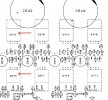OP
beavernuggetz
Member
- Joined
- Sep 21, 2023
- Messages
- 36
- Likes
- 2
- Thread Starter
- #41
You know what's odd? Yesterday I spent some time taking measurements again and it was dead; today I went in to measure voltage between SMPSREF & R40/641 and it measured 29 volts, shut it off to avoid cooking R610, applied power again after it cooled off, and the darn thing powered on. What gives?
Anyway, here are my findings from your questions.
Here is the thing though, before soldering TL494 & FAN7380MX the voltage between SMPSREF & D605 was very close to 16 VDC which I thought was enough to power up the amp but unfortunately that was not the case.
Again, I'm clueless but happy that it's working; hopefully it stays this way.
You may have better insight as to what could have brought this thing back to life if nothing has changed.
PS: I did add one additional screw to hold the board down (since I'm only testing at this stage only a few screws are used) near the power supply side so perhaps the PCB was not grounded properly.
Here is a picture denoting where continuity exists.

Anyway, here are my findings from your questions.
Measured again; it is closer to 9.5 volts across all 3 resistors. The current limiter bulb does not indicate any type of short and the only thing getting hot as before is R610.V or mV? 10 V would indicate a major short
You are correct, I did not measure properly; they both have 12.2 volts across. They also measure 1.35K resistance.These guys (R640/641) ought to be directly in parallel.
Here is the thing though, before soldering TL494 & FAN7380MX the voltage between SMPSREF & D605 was very close to 16 VDC which I thought was enough to power up the amp but unfortunately that was not the case.
Again, I'm clueless but happy that it's working; hopefully it stays this way.
You may have better insight as to what could have brought this thing back to life if nothing has changed.
PS: I did add one additional screw to hold the board down (since I'm only testing at this stage only a few screws are used) near the power supply side so perhaps the PCB was not grounded properly.
Here is a picture denoting where continuity exists.
Last edited:

